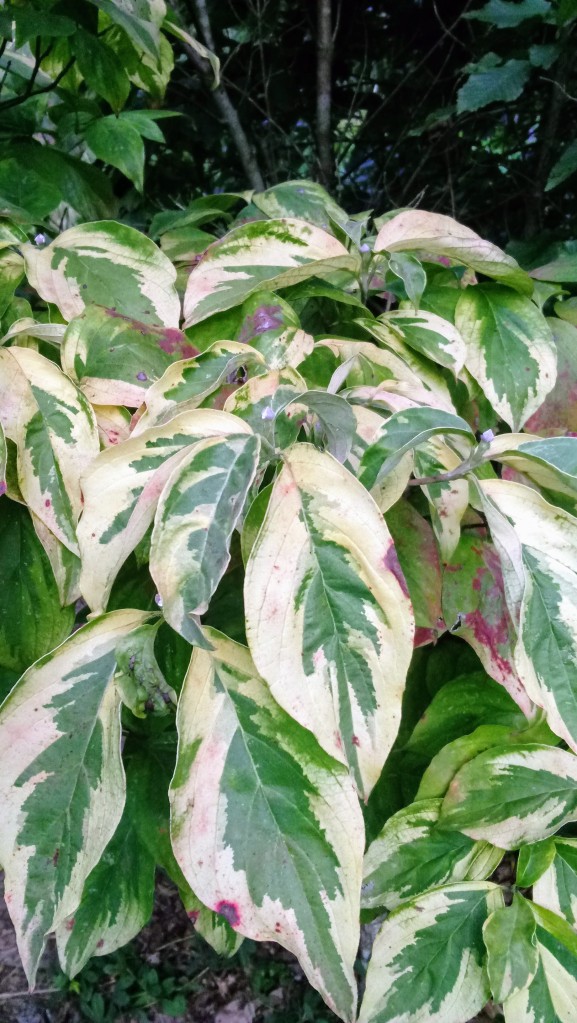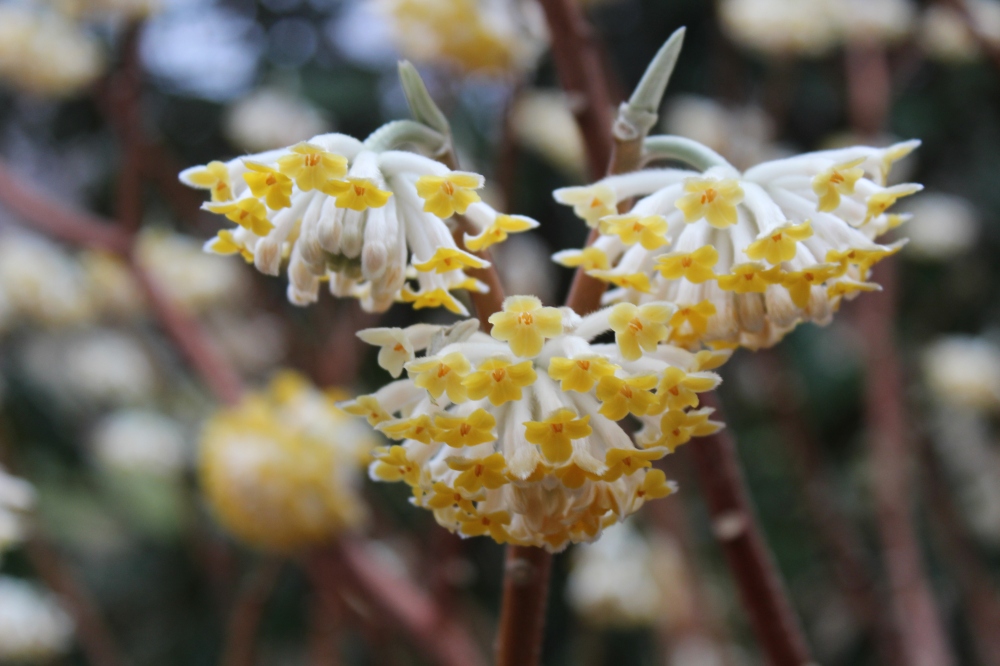Excellent news. Buds are forming on the variegated leaf, red flowered ‘Cherokee Sunset’ dogwood (Cornus florida ‘Cherokee Sunset’, below). For whatever reason, there have been no flowers on the dogwood in recent years. I’ve been resigned that perhaps there would never be flowers again, so this is a pleasant surprise. Also unusual is that the leaves, that are prone to powdery mildew, are mostly clean at the end of August, which is remarkable after a rainy summer. I suspect that the lack of mildew could be related to flower buds forming, with more energy devoted to bud formation rather than working just to survive. I can’t see anything else that’s changed, though the gardener should never say that nothing’s changed, since changes are often not obvious.

Otherwise, the garden is about as good as could be expected for late summer. Roses are a bit beaten up from leaf spot that is unavoidable without spraying, even ones that claim not to require spraying. These typically look very good until July, when leaf problems appear to varying degrees. Now, they’re not horrible, but it would be impossible to argue that they are immune to foliar problems.
I’ve noticed that paperbushes (Edgeworthia chrysantha, below) have grown exceptionally this year, crowding neighbors that I supposed were safe from their spread. Many references list the mature size of the shrub as four feet tall and wide, but several are now six, maybe seven feet tall, and at least ten, probably twelve feet across. Obviously, this was not planned for when they were planted, and years ago some neighboring plants were moved to accomodate their growth. 
No doubt, the recovery of the paperbushes from freeze damage several years ago is complete. After consecutive cold winters, several feet of dead wood was pruned, reducing the large shrubs from ten feet across to three. Now, they’re back, bigger than ever, and I wonder where they’ll go from here. Fortunately, perennials and smaller shrubs have been moved out of the way except for a yellow leafed spirea that cannot be transplanted and will probably be lost in another year. There are two more in better spots, so this isn’t much of a bother.
On occasion, the gardener must decide to remove an overgrown shrub, or not, but there is no consideration that the treasured paperbushes will be removed. There are few enough flowers in the garden in late winter, and if temperatures are mild, paperbushes can begin flowering as early as late January, though a month or six weeks later is more typical. I am baffled that paperbush is not more popular, even a bit further to the south where it is best suited. As is typical of many gardeners, I suspect, the more uncommon a plant, the more it is favored, and so it is.
Beautiful pics as always Dave, but I’m surprised as I thought Dogwood only bloomed in the spring? Thanks for a lovely blog as always!
Buds for spring’ s flower begin in August, so I can now see buds that will flower in April.